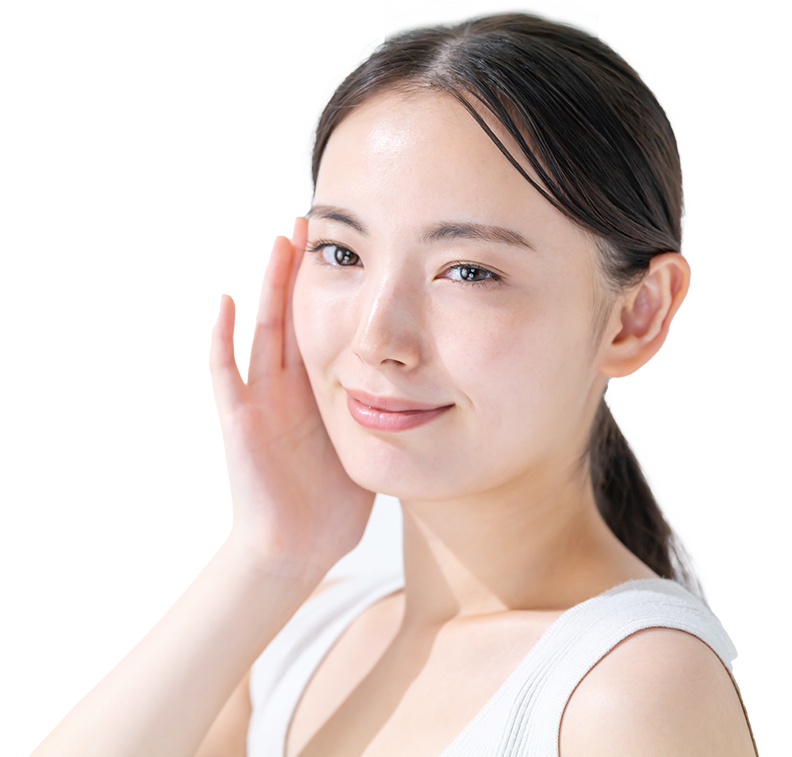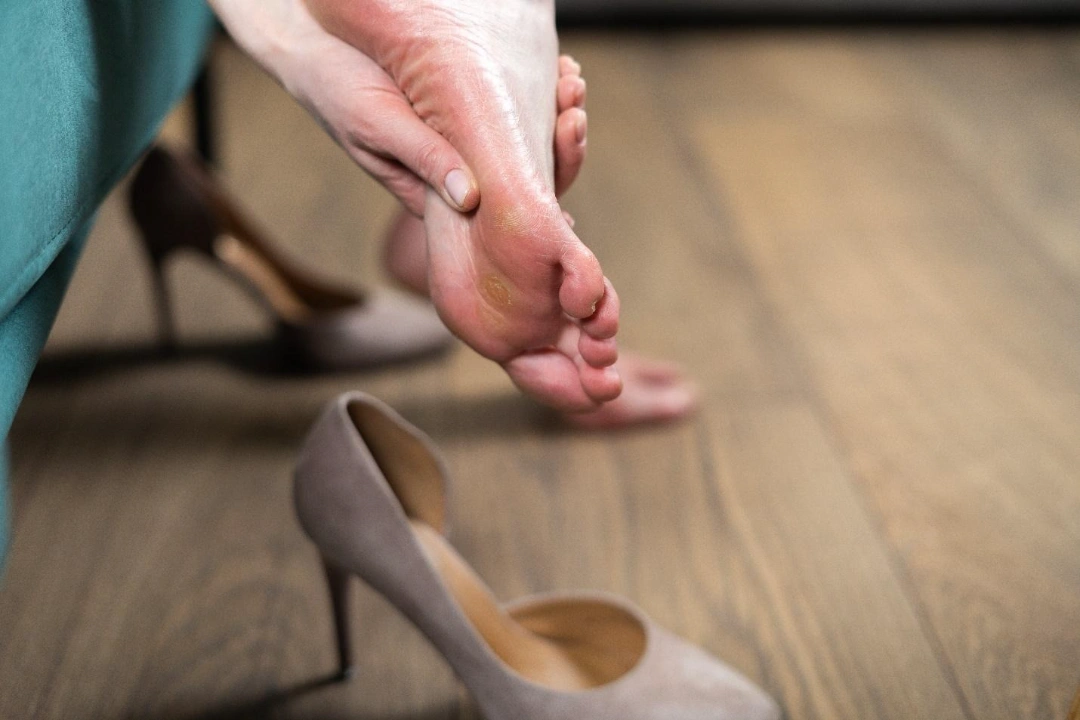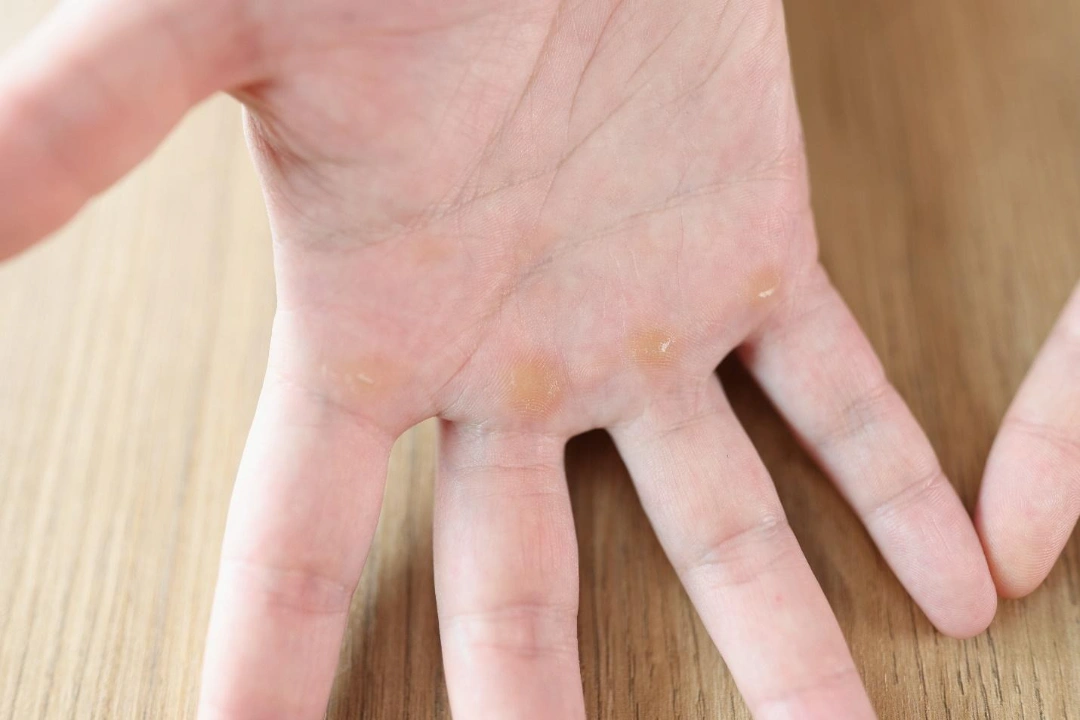
Corns and calluses are among the most common skin problems affecting the feet and hands. Almost everyone experiences them at some point, especially those who spend long hours standing, walking or wearing tight shoes. Though not dangerous, they can be painful, unsightly and frustratingly persistent, often interfering with daily comfort and mobility.
Many people choose to have them treated not just for relief but also for confidence, whether to walk more comfortably, wear open footwear without embarrassment or prevent worsening pain that alters gait. But with professional dermatological care, corns and calluses can be treated safely and effectively, often with immediate relief.

Corns and calluses are areas of thickened and hardened skin that form in response to repeated friction or pressure. This thickening is the skin’s way of protecting itself by producing more keratin. But slowly, the build-up becomes uncomfortable.
The 2 skin conditions are characterised by:
Dermatologists classify corn into several types, each with distinct features:
While both are caused by friction and pressure, they differ in structure, depth and location, such as:
| FEATURE | CORN | CALLUS |
|---|---|---|
| Appearance | Small, round and cone-shaped thickening | Broad, flat and diffuse thickening |
| Texture | Firm centre with a dense core | Evenly rough or waxy surface |
| Location | Over joints, tops or sides of the toes | Soles of the feet, heels and palms |
| Pain | Often painful when pressed | Usually painless unless cracked |
The main mechanism behind both conditions is repeated friction or pressure that stimulates excess keratin production. When the outer skin layer thickens, it forms a protective shield. But in doing so, it creates hardened areas that can become painful.
Both conditions are usually easy to identify by sight and touch, as they have the following characteristics:
But if the skin becomes red, swollen or starts to ooze, it may signal infection. This requires immediate medical attention.
Anyone can develop them, but some factors make certain people more susceptible. These risks do not directly cause corns or calluses. Instead, it increases the likelihood of pressure and friction that lead to them.

This includes:
The diagnostic process is straightforward and it is typically done through a physical examination. It entails:
Medical history
Our dermatologist will begin by discussing your symptoms and lifestyle, including:
Physical examination
Our dermatologist will then proceed to examine the affected skin closely to assess:
Identifying contributing factors
Because corns and calluses often result from friction and abnormal pressure, our dermatologist may also:
The treatment focuses on reducing pain, restoring comfort and preventing recurrence. Depending on your condition, our dermatologist may recommend:

Corns and calluses are common, preventable and treatable skin conditions caused by repeated friction or pressure. Although often minor, they can cause significant pain or inconvenience if left unattended.
Professional dermatological care can alleviate discomfort, restore smoothness and prevent recurrence by addressing the underlying cause. At Livingstone Dermatology, we combine safe and effective treatment with tailored advice to help you stay comfortable and confident every step of the way.
If you have been experiencing discomfort or pain due to thickened skin, then do book an appointment to have it evaluated and treated.
Are corns and calluses contagious?
No. They form due to friction, not infection.
Can corns and calluses be prevented?
Yes, with the right care and habits, they can often be avoided. Some of the tips you can practice are:
Can I treat them at home?
It is important to avoid cutting or using harsh medicated plasters without guidance. This is because improper use can burn or damage healthy skin.
How soon will they go away after treatment?
You will feel relief immediately after removal, but full healing and smoothness may take a few days.
Why do they come back?
If the same pressure or friction continues, new corns or calluses may form, which is why addressing the cause is key.
When should I see a dermatologist?
If you experience pain, infection or recurrent corns or if you have diabetes or circulation issues, professional care is strongly advised.
Whether you’re dealing with a specific skin concern or seeking to enhance your natural beauty, Livingstone Dermatology is here to guide you on your journey to healthy, radiant skin.
Schedule an appointment today and experience the Livingstone standard of care in a welcoming, professional environment.